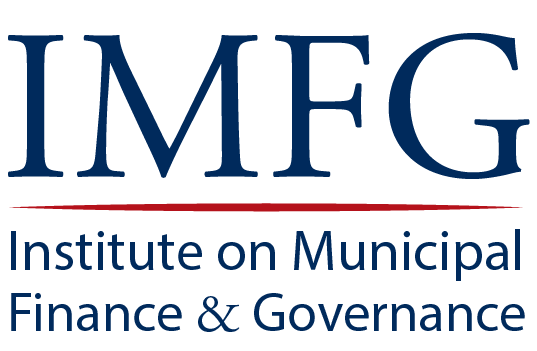The University and the City: A Mutually Beneficial Partnership
by Meric Gertler
I recently had a nightmare. It is 2030, five years after a perfect storm has forced the city’s universities to close. Universities saw their public funding reduced substantially over time, as part of the effort to tackle the provincial deficit. Tuition fees were abolished in the belief that this would expand access. Universities’ pension plans faced huge unfunded liabilities, requiring onerous extra payments to be diverted from increasingly depleted operating budgets. The Ministry required more courses to be offered online and demanded that degree programs be just three years in length, to reduce costs and to speed graduates’ entry into the workforce.
The universities struggled to resist decline. Layoffs were inevitable, of course, but few predicted how quickly the downward spiral would occur. Once the layoffs started, the most talented and mobile faculty left for greener pastures. About 176,000 university students looked elsewhere for their education, and some 50,000 jobs were eliminated. Together, that’s roughly the population of Regina. On the plus side, Toronto’s morning commute improved.
Certain direct economic effects were obvious. Local businesses folded as their customers dried up – bike stores, cafés, furniture stores, restaurants, clothing stores, movie theatres, and more. Knowledge-intensive and creative industries began to struggle. Competition for employees intensified as the talent pool dried up. The production of startups dwindled.
Then larger, more established, firms started to leave. The Vector Institute, the world’s leader in artificial intelligence, moved to Boston. Google and Uber soon followed. TD Bank moved its head office to Montréal. Last to leave was Amazon. Amazon had chosen Toronto for the company’s vaunted second headquarters, citing the city’s well-educated workforce, its cultural vibrancy, economic diversity, and quality of life. But even Amazon had to cut its losses.
Real estate values, long a source of both pride and pain for the city, crashed. Tax revenue stagnated. Jobs became even more scarce. Economic hardship produced social tension and led to an increase in crime. Infrastructure, already in disrepair, was crumbling in many places. Tourism simply stopped.
The Province struggled to find buyers for the universities’ huge property assets. Potential suitors were worried about deferred maintenance, upkeep costs, and the declining neighbourhoods surrounding campuses. Eventually, hostage to the demands of developers, the Province eased and then waived the tight heritage protections downtown, clearing the way for the demolition of some of Toronto’s most iconic buildings. The city, once a rising social, cultural, and economic hub, quickly became the capital of a new rust belt…
This shocking nightmare is a fantasy, of course, and surely an improbable one. Yet it reminds us that the relationship between a university and its host city is important to the success of both entities. Universities are, first and foremost, producers of talent for firms of every description, and portals of opportunity for individuals from across the socio-economic spectrum.
For example, thanks to student aid from both the Province and the University, more than a quarter of U of T’s domestic, first-year undergrads come from families with annual household incomes of less than $50,000, and more than half our domestic undergraduates receive needs-based financial assistance. Every year, 16,000 students graduate from U of T and enter the workforce – graduates who rank 13th in the world for their employability, and first among all public institutions in North America, according to the London-based Times Higher Education survey. Toronto’s universities and affiliated hospitals also conduct research worth nearly $1.5 billion annually.
No wonder the Toronto region is one of North America’s leading centres for research in fields like biomedical therapies and technologies, public health, and artificial intelligence. Our research strengths in everything from physics to philosophy connect Toronto to the world through a global network of shared research and scholarly collaboration. Toronto has leveraged its universities to reinvent itself continually over time, evolving from a trading post to a production centre for textiles, tanning, farm implements, and food processing, and most recently to a centre for finance, pharmaceuticals, film-making, and machine learning. Education and research are the foundations of this resilience.
The impact of universities on their host cities is keenly felt at the community level. To borrow a concept from the retail sector, universities serve as “anchor tenants.” They are major pillars of a community’s economic base (U of T produced more than 36,000 T4 slips in 2017). Not only does a university’s presence generate substantial economic activity on its campuses and for nearby businesses, but it also keeps local property markets buoyant. Universities don’t threaten to relocate in order to seek greener pastures elsewhere. Universities are committed to their local communities, with a presence measured in decades or, in some cases, centuries.
At the same time, universities depend upon their urban hosts to help attract and retain the talent they both need to thrive. The most talented, creative, and entrepreneurial members of the labour force generally prefer to live in urban settings offering a high quality of place: cities that are safe, culturally vibrant, and physically appealing, with good public schools, and an openness to newcomers and new ideas. So, by investing in the health of cities, we are also investing in the success of our most important producers of talent, knowledge, and innovation. Thus, cities and universities jointly create, and share, their prosperity. It is a fundamentally symbiotic and mutually advantageous relationship.
Happily, my nightmare remains far-fetched in Toronto – though, as a glance around the world will attest, not every jurisdiction is so fortunate. Years of cooperation between Toronto and its universities have led to deeply rooted collaborations based on growing respect and an appreciation of the mutually advantageous nature of the partnership. As we enter another municipal election season, we should reflect on the nature and remarkable success of Toronto’s flourishing knowledge and talent ecosystem – and the institutions, people, and partnerships at its heart.

Meric Gertler, CM, FRSC, FBA, FAcSS, is president of the University of Toronto and professor of geography and planning. One of the world’s foremost urban theorists and policy practitioners, he has served as an adviser to governments and agencies in Canada and around the world, and has authored or edited nine books, including Manufacturing Culture (2004) and Growing Urban Economies (with David Wolfe, 2016).
